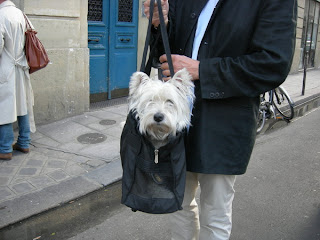 |
| Chaïm Soutine, Self-Portrait, 1918 |
My first impression of the Soutine exhibition at the Musée
de l’Orangerie was: colour. For an artist working during and in between two
world wars, Soutine’s palette was unbelieveably vital and sumptuous. The greens
and blues of the trees and the skies, the intense red that colours everything
from clothes to the bloody flesh of meat, even the unusual baby blue
backgrounds against which portraits are painted, fill the rooms of the
Orangerie with an energy and excitement. I can’t think of a more appropriate
place for these paintings to be hung than in the environs of Monet’s Water Lilies.
 |
| Chaïm Soutine, Arbre Couché, vers. 1923-24 |
Soutine’s paintings are about the medium of paint as much as
they are about the world that he paints. Working in the three classical genres
of landscape, portraiture and still life, Soutine was as seduced by painting as
representation as he was by the painted
representation. I am not really in a position to say whether Soutine’s
indulgence in the sensuous qualities of the image made critical developments in
the genres in which he painted. It’s true that there is nothing quite like
Soutine’s paintings in his contemporary Europe. However, one could argue that
Monet’s richness of colour and erasure of the horizon line, Ludwig Kirchner’s distorted
bodies and the Germans' expression of internal turmoil on the picture plane, their
penchant for the dissolution of figuration through a simultaneous colourist exploration,
is everywhere on Soutine’s canvases. Similarly, we might want to locate the
presence of surrealism in the sinuous, tortuous houses that resemble buildings
blowing in the wind. Alternatively, we could argue that the still life sliding
off both their table and the picture plane speaks to the surrealist exploration
through abstraction of the painterly in a desire to create dream worlds. But
this said, I do not get the sense that Soutine’s style contributes to the
forward motion of the history of art. Of course, there is a deep commitment to
the pursuit of the questions plaguing modernism, but Soutine’s response is
apparently singular.
 |
| Chaïm Soutine, Boeuf écorché, 1924 |
What I love most about the paintings is their instability,
an instability that is in direct contrast to the vivacity and forthrightness of
colour. The idea of endless turmoil painted in bright blue and rich green is so
impossible to conceive of that we are left with no other option than to celebrate the
contradiction. Moreover, the paintings are filled with uncertainty and anxiety,
and yet they are clearly structured, with a background for the portraits, a sky
for the landscapes, a table for the still lifes. And they each have a frame, a clear separation from us as they sit
inside their own world on the wall of l’Orangerie; there is no sense in which
the insecurities and instability of the world depicted ever spills over into
ours. And yet, simultaneously, the still lives are anything but dead: the
rabbit screams out for attention, the meat and the wine of La Table (c. 1919) slide off the table in a grand gesture of
dissention, and the bloody red flesh fills the room with its odour, as though
the carcass has a personality, a personality that it is revealed through its
insides.
 |
| Chaïm Soutine, Portrait d'un Homme, vers 1922-23 |
My favorites of all the paintings are still the portraits.
And their most intriguing moment is always the moment of the dissolution of the
face, that moment on the canvas where the identity becomes unstable, the self
melts into the world around it, in this case the background. In the example of
the Portrait of a Man (1922-23) this moment
is surprising because it is not the misshapen right side of the face that
causes the most trouble on the otherwise peaceful canvas. Rather, it is the
moment where the face melts into the sky blue background, the moment where everything
is thrown into question.
 |
| Chaïm Soutine, Enfant de choeur, vers 1927-28 |
Ultimately, the density of the paint makes these works lush
and seductive. They are filled with emotion, sensuousness, they are physical,
masculine, but not angry or grotesque. In fact, one of the things that makes
the portraits so compelling is that the faces are all soft, self-reflecting in
the way we imagine a Rembrandt sitter might be. If the sill lives are loud, and
their decomposing flesh repels us, the portraits are quietly troubled because their emotions are
internalized, even as the face, and with it the identity, slides off the
canvas. Soutine’s style and technique is as suited to decomposing flesh as it
is to sitters who simultaneously bare and bear their own disintegration.



